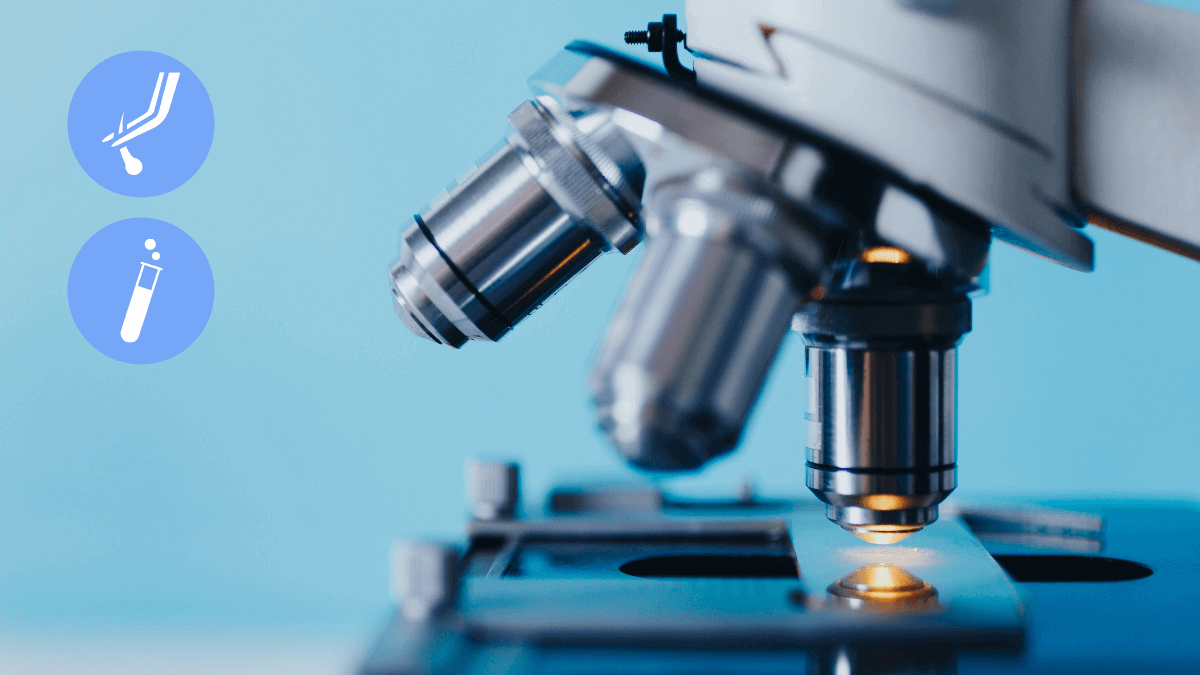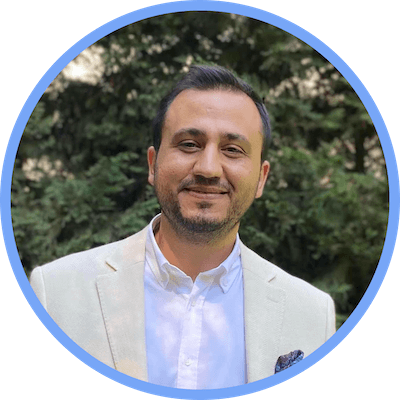TL;DR
➡ Bio-enhanced hair restorations are hair transplant surgeries supported with bio-enhancement products that increase the effectiveness of your hair’s restoration in every surgery step.
➡ As with every other surgery, hair transplants have a possibility for failure and specific weaknesses or damages caused to the body. Bio-enhancements are great for covering up these flaws.
➡ With the rich amount of healthy ingredients, bio-enhancements are great for supporting your hair grafts’ survival rate during a hair transplant, especially after their heavy physical trauma.
➡ Usually, you use these healthy vitamin-filled products in every surgery step as they are vital for ensuring that you reach your desired result in less than multiple hair transplants.
❔ Did you know that it takes the average hair transplant patient 3 to 4 surgeries to achieve their desired result?
For many people dealing with balding, this statistic is truly worrying and might portray hair transplantation as an ineffective technique.
Getting a single surgery and moving on with your life with your natural look restored is the aim of every patient, and ensuring that is both your and your physician/clinic’s duty.
And over the decades, physicians and clinics came up with new techniques and medications that help improve your chances of success; bio-enhancements being one of the most innovative ones.
In this blog, I want to explain what bio-enhancements in hair transplantation are and how they’re used, as well as how exactly they’ll help you:
Table of Contents
But first, let’s set up the base concepts in order:
What Is Biological Enhancement?
When we say “biological enhancements”, for most people, the first thing that comes to mind is usually the super-soldier serum from Captain America. Something like a medication or a vaccine that you can use to enhance your body’s strength, speed, or even intelligence.
Although this visualization is somewhat accurate, in real life, we’re not close to handing out biological enhancements that could directly augment your capabilities.
Instead, what we have today are medications, substances, or solutions that can help speed up or improve your bodily processes that are usually on the microscopic level.
And in fact, a significant part of supplements and medications you use can be called bio-enhancements, since they meet the definition we’ve just proposed.
What Is a Bio-Enhanced Hair Transplant, Then?
A bio-enhanced hair transplant, simply put, is a hair restoration surgery where certain medical products are used during different stages of the procedure to try and improve the end results and the success rate of the operation. The most common of these products are MatriStem, liposomal ATP, and HypoThermosol FRS.
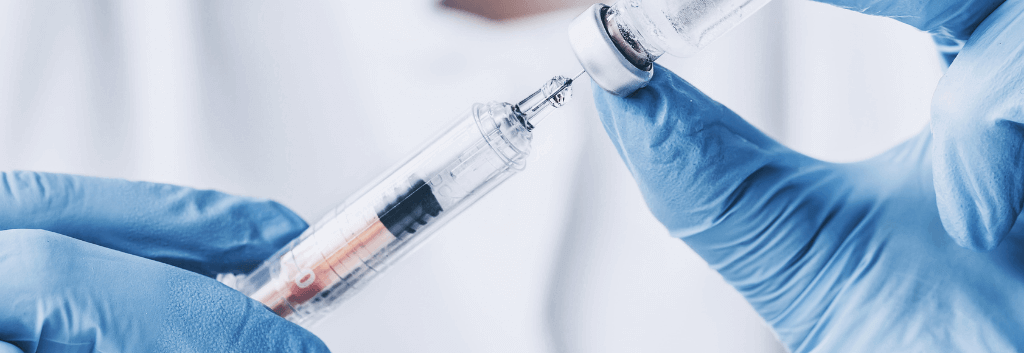
As Jerry Cooley, MD -who’s been using bio-enhancements with his surgeries for over a decade- describes in his extensive article on the topic, “if the surgical technique is the ‘cake’, then these bio-enhancements can be thought of as the ‘icing on the cake’“.
These bio-enhancements come into play to cover the flaws and improve the processes of modern hair transplant surgery, including both FUE and FUT.
Each product is used at a different stage of the surgery with its own method and is observed by many expert surgeons to produce better results compared to when they’re not used.
Why Bio-Enhancements should be used for hair transplants
The answer is simple: to cover up the flaws and weaknesses of modern hair transplant techniques and perfect them.
The biggest reason for hair transplant failures is low graft survival rates, in other words, loss of the transplanted grafts after the surgery.
And the biggest reason behind that is arguably the damage and trauma each graft goes through during the surgery.
Once grafts are extracted, they sit in the holding solution for a considerable amount of time, away from your body. During this period, the cells in your follicles are cut away from your body’s blood flow without oxygen or nutrition.
The more time they spend outside your scalp, the more damage and trauma they will go through, resulting in weaker and miniaturized hair or worse, follicles falling out from your scalp rendering your surgery a failure.
Plus, it takes your hair follicles a few days to properly connect back to your blood flow and start healing.
So, mixed into the holding solution or applied directly on the scalp after surgery, some bio-enhancements can be used to provide your cells with the necessary energy to survive.
You can think of a planted hair graft from a bio-enhanced hair transplant surgery as a super soldier like Captain America, biologically improved to better withstand the harsh conditions they’re now deployed in.
What’s Used in a Bio-Enhanced Hair Transplant
Each bio-enhancement used covers a different angle during the operation and goes perfectly well with each other.
The most widely-used medical products to help improve your chances of success in a hair transplant surgery are:
Liposomal ATP
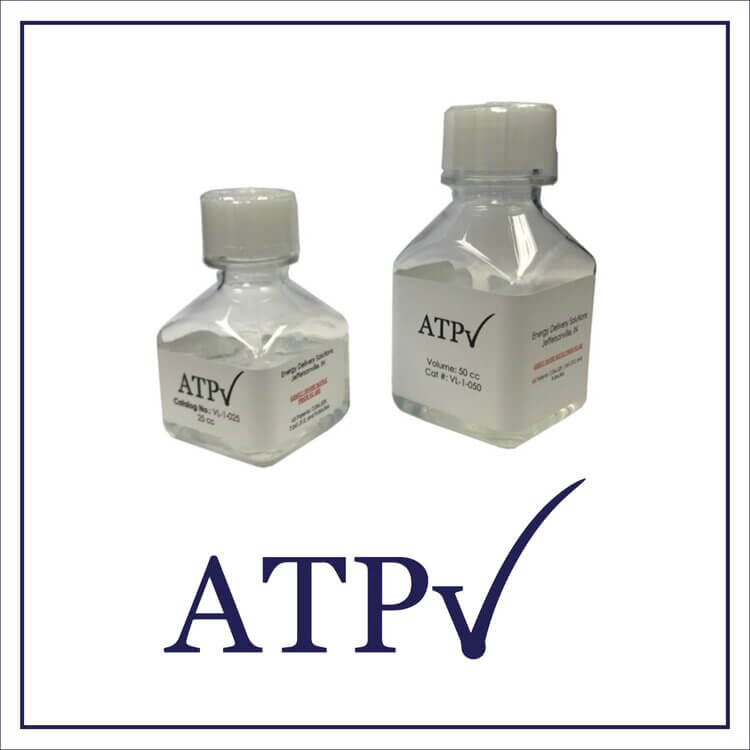
Long story short: Liposomal ATP is a product that contains ATP molecules inside liposomes and it directly provides your cells with the energy they need.
And long story long, if you are interested:
- An Adenosine Triphosphate (ATP) is the molecule that carries energy in and out of your cells and fuels their routine processes to stay alive and grow.
- A liposome is a microscopic body of fat that is used in the pharmaceutical industry to ensure that vitamins, minerals, and other substances are delivered directly inside human cells. Sort of like the packaging a product you order online comes in.
- Therefore, liposomal ATP is ATPs delivered inside your cells, covered with liposomes to ensure efficient delivery.
ACell MatriStem
ACell MatriStem, commonly called as ACell or MatriStem, is a medical product that is basically an extracellular matrix (ECM) made from pig bladder and is proven to help with wound healing and cell growth.
- To further explain, an extracellular matrix, usually referred to as ECM, is a network of various molecules around your cells that provide support and structure to tissues.
- ECMs actively contribute to cell growth and communication, so they play a crucial role in wound healing.
- ACell’s MatriStem product contains ECMs derived from pig bladder; it helps especially with wound healing after surgeries such as hair transplants or is directly injected into thinning areas of your scalp to promote hair growth.
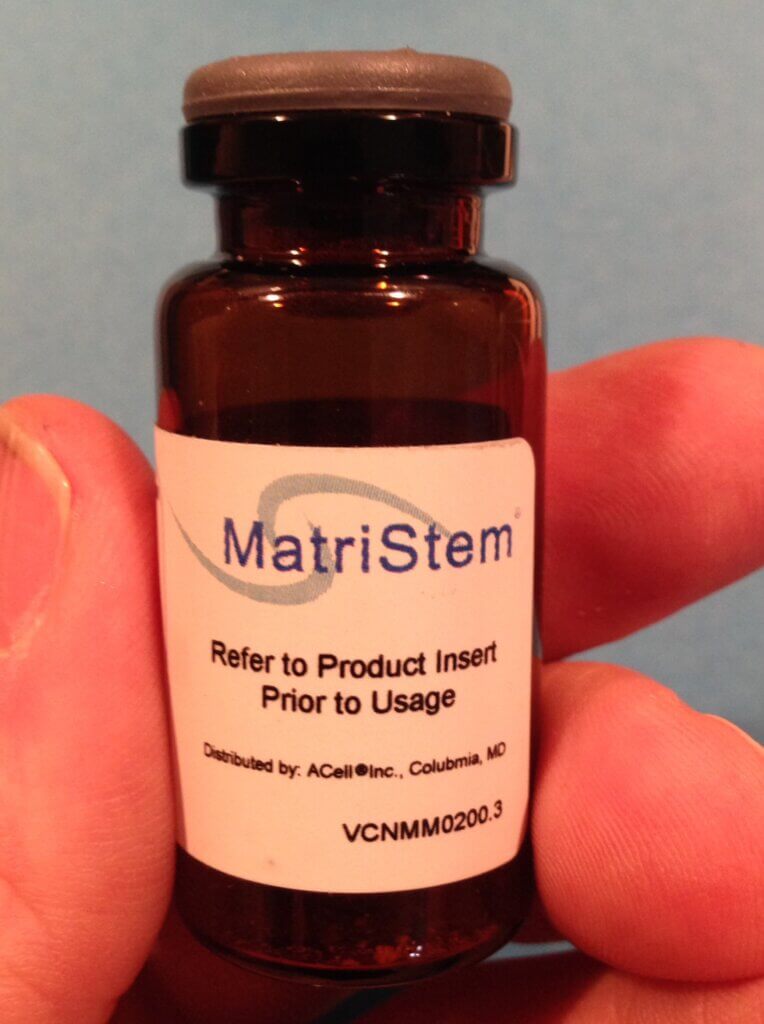
HypoThermosol FRS
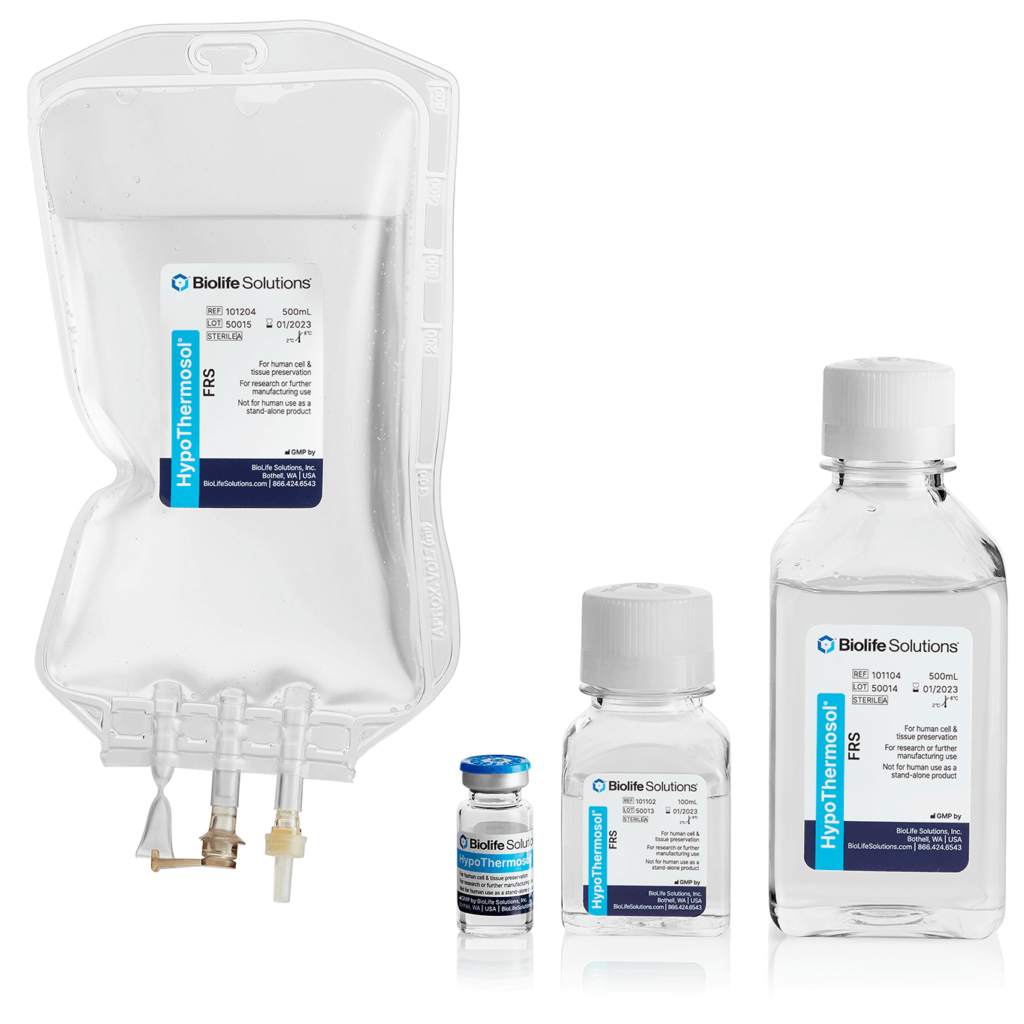
HypoThermosol FRS is the perfect solution of different substances for tissue and organ storage/preservation over long periods of time.
It includes ions to balance temperature, “pH buffers, energy substrates, free radical scavengers, and osmotic/oncotic stabilizers.”(1)
Specially beneficial and protective for hair follicles during the period they spend separated from your scalp, HypoThermosol FRS provides surgeons with the perfect holding medium.
Each of these products has a role to play during and after your hair transplant surgery, and more and more surgeons have been using all three or a combination of these products for decades.
There are several studies proving the effectiveness of bio-enhancements in hair transplantation, such as this 2011 experiment for the combination of HypoThermosol and Liposomal ATP, or this one evaluating MatriStem. Additionally, top clinics and surgeons worldwide advocate for these products and their effectiveness.
Bio-Enhanced Hair Transplant Process Explained
By now, you probably have some rough ideas regarding how each of these products works and helps with hair transplant success.
But, let’s go a bit deeper and examine the whole hair transplant process and see where in the hair transplant process each of these bio-enhancements come in:
Examination & Pre-Surgery
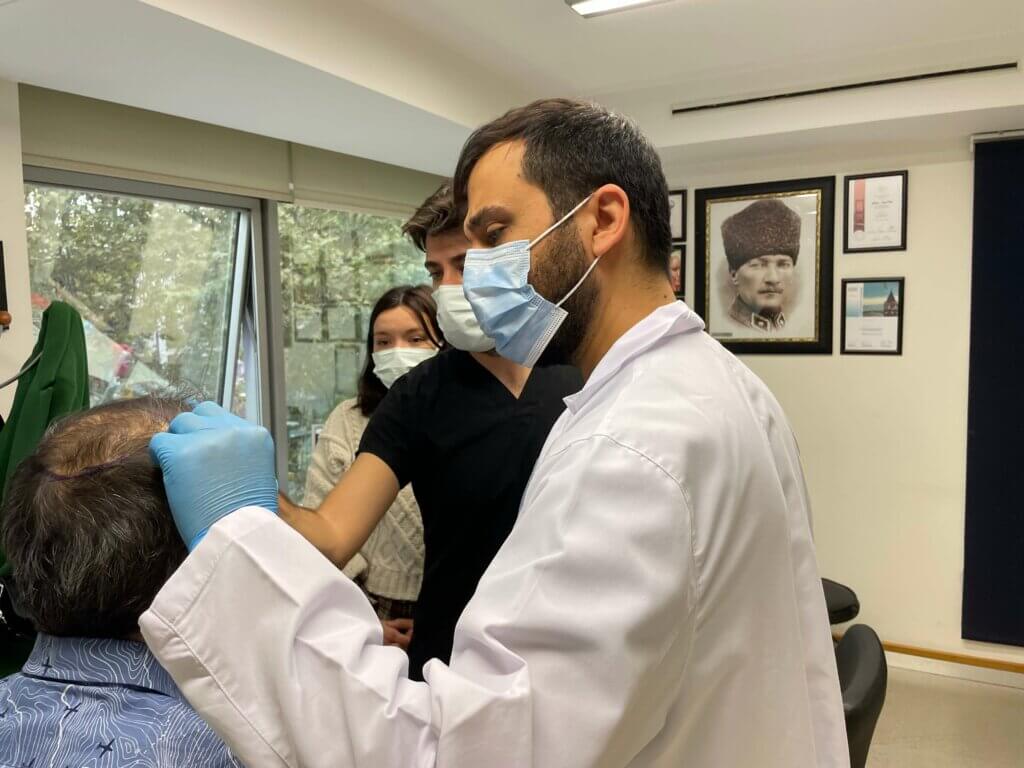
Once you’ve decided you want to work with a clinic/surgeon that has adopted bio-enhancements, you’ll need to go in for an examination or go through an online consultation and examination.
Once your physician has all the information to decide on graft count and the technique that is going to be used, you’ll set a date for the surgery.
Your surgeon might suggest you take additional medication or supplements before the surgery. At UnitedCare, we ask our patients to start taking Finasteride 90 days pre-op and Vitamin C 7 days pre-op, to slow down hair loss and promote healing respectively.
**
On the surgery day, your physician suggests a new hairline and draws donor and recipient sites for the operation. Local anesthesia will be applied to your scalp and the harvesting phase will begin.
Harvesting
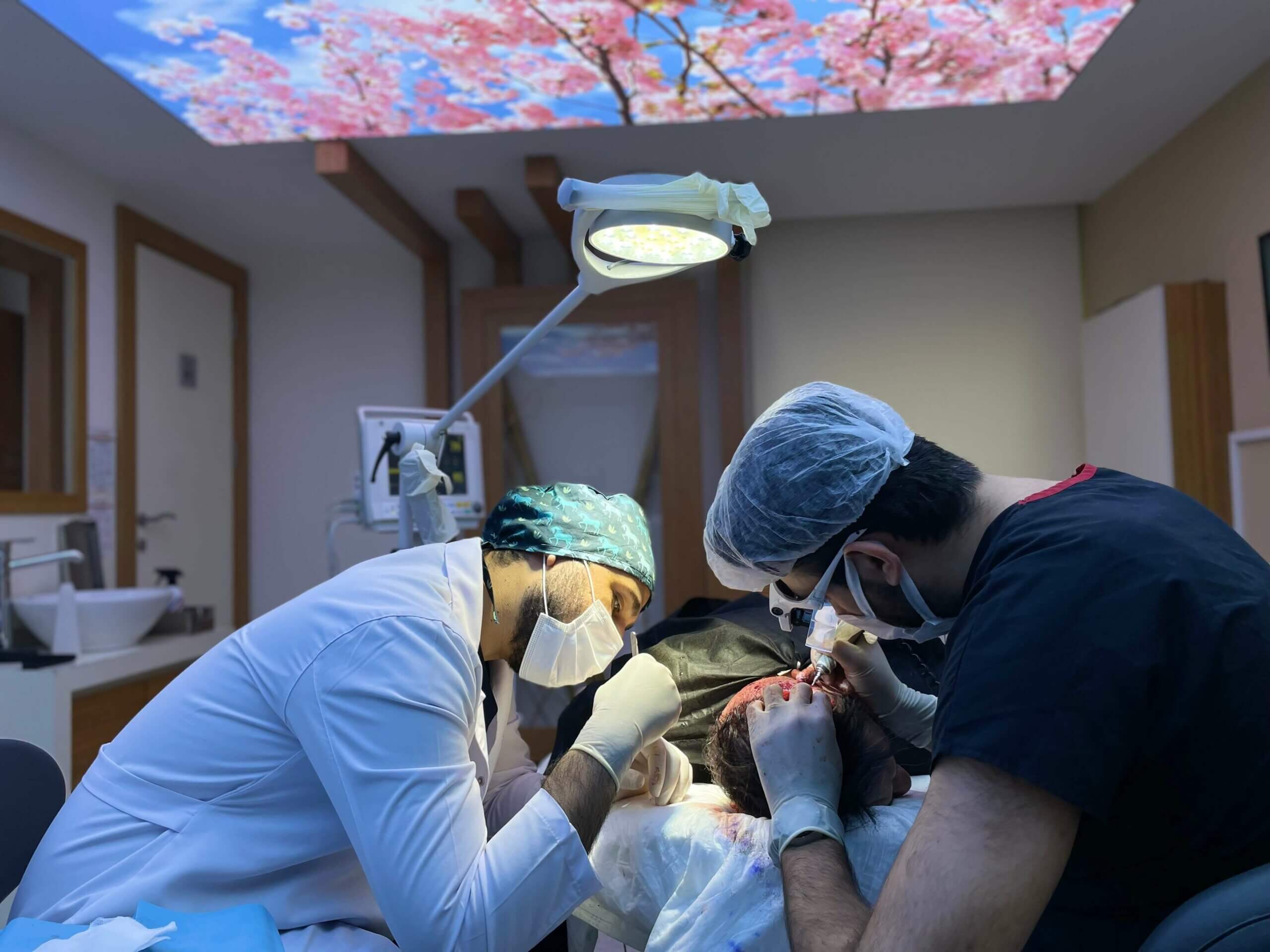
During the harvesting phase, your surgeon will extract individual hair follicles by either:
FUE
Removing individual hair follicles directly from the donor site:
✅ minimal scars
✅ better healing
❌ longer operation time
FUT
Removing a strip of tissue from the donor area and separating hair follicles from it:
✅ allows for more grafts
✅ more affordable
❌ visible permanent scars
In a bio-enhanced hair transplant surgery, the surgeon will place harvested grafts inside HypoThermosol FRS combined with liposomal ATP (1% of HypoThermosol FRS), to make sure hair follicle cells are minimally damaged.
The extracted grafts wait inside the holding solution until the implanting step.
Implanting
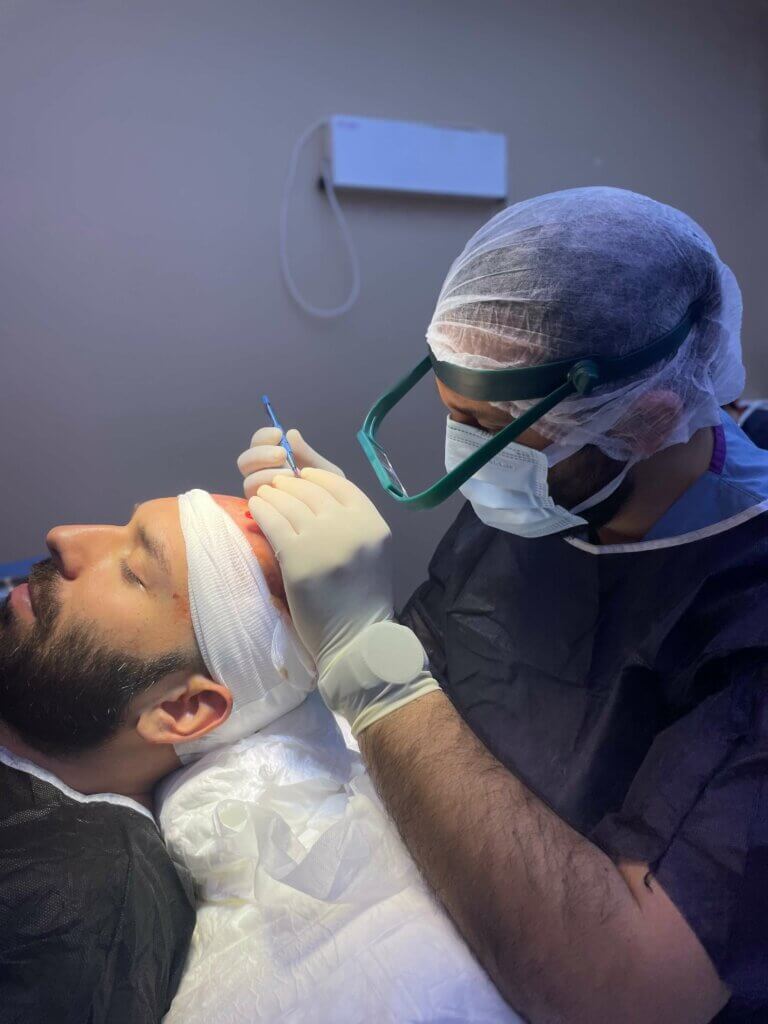
During implantation, harvested grafts are removed from the holding solution and implanted into the recipient area until the hairline is restored.
In the DHI technique, an implanter pen is used to make incisions and implant grafts at the same time. And in other techniques, an incision is first made with a scalpel before planting grafts with forceps.
In a bio-enhanced hair transplant surgery, the surgeon will coat the hair grafts with ACell MatriStem before placing them in the recipient area to ensure cell growth and skin texture.
Post-Surgery
Once all the harvested grafts are implanted and the hairline is restored, the surgical procedure is concluded, but the process doesn’t end.
The post-operation care for hair transplant surgeries is as important as the surgical part, maybe even more. That’s because this is the part that determines the survival of your transplanted grafts.
Your surgeon will provide you with the guidelines and products you’ll need; or in UnitedCare Hair Clinic’s case, a Care Assistant tool you can track.
In 6-12 months, if everything goes according to plan, you’ll see your new hair grow thick and restore your natural look.
And in a bio-enhanced hair transplant surgery, the surgeon will suggest you use a spray that contains liposomal ATP to provide energy for your newly transplanted hair, for a few days following the surgery.
Additionally, if your newly transplanted hair is struggling with growth, an ACell MatriStem and PRP mixture can be injected into the recipient area to promote healing and growth.
How Much Does a Bio-Enhanced Hair Transplant Cost?
Naturally, the addition of these products will load up your cost of the hair restoration procedure, but not in an extreme way. On average, a bio-enhanced hair transplant surgery will cost $500-$1000 more than the traditional surgery with the same method and graft count, adding the cost of the bio-enhancing products.
Bio-Enhanced FUE Surgeries at UnitedCare
At UnitedCare, we adopt a holistic approach to hair restoration.
We’ve started our hair clinic as a dermatologist duo with 20+ years of combined experience.
We believe we can and should:
✅ Identify and eliminate the causes of hair loss,
✅ Use Sapphire FUE and DHI for hair transplantation for the best results,
✅ Boost Graft Survival Rate with Bio-Enhancements and PRP injections,
✅ Regularly check in with patients post-op to ensure success,
and put our patient’s health over anything else.
Schedule an online consultation from below, we’re just a click away 👇
Restore your hairline with Bio-Enhanced FUE Surgeries at UnitedCare.
Ensure the success of your hair transplant with the latest techniques and expert dermatologists:
Frequently Asked Questions (FAQs)
How do bio-enhancements improve the success rate of hair transplants?
Bio-enhancements such as liposomal ATP and HypoThermosol FRS minimize damage to hair grafts and provide them with energy during storage while ACell MatriStem promotes hair growth and healing following the operation.
Are bio-enhanced hair transplants available in every clinic?
Most clinics don’t adopt bio-enhancements, and those that do usually offer extreme prices patients can’t afford. It’s difficult to find clinics that provide affordable prices for the best care with bio-enhanced hair transplant surgeries, such as UnitedCare.
What is a bio-enhancer?
A bio-enhancer is a substance, solution, or medication that biologically augments your cells’ or organs’ ability to grow, heal, or work. In hair transplantation, these bio-enhancers help hair grafts survive and grow.
